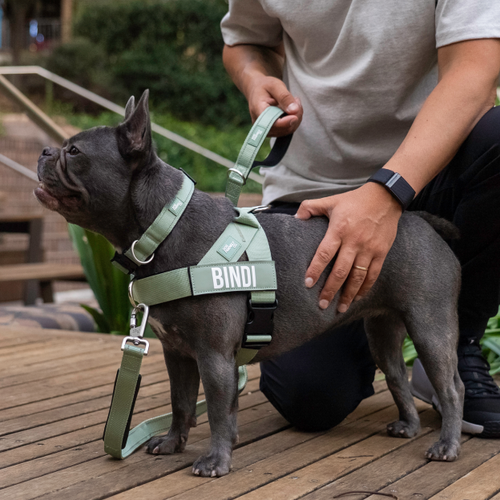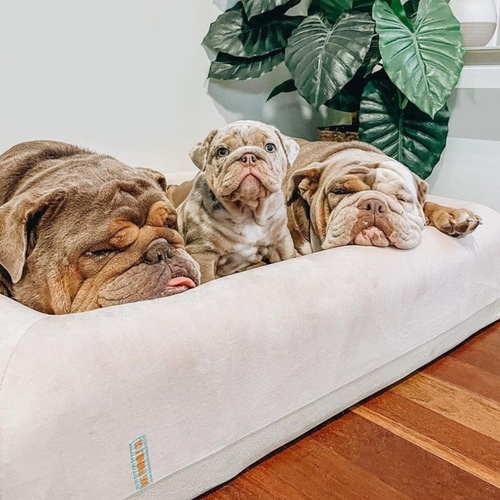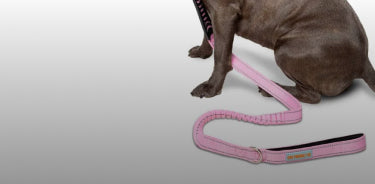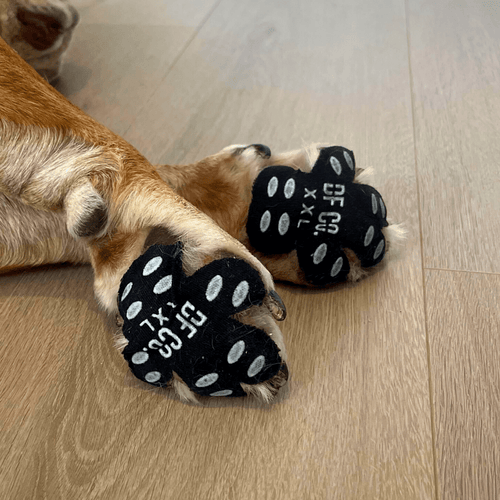A no-pull dog harness, sometimes referred to as a front clip dog harness for pulling, is designed to prevent dogs from pulling on their dog leash during walks. As dog owners, having an understanding how this type of harness works can help you get your dog to stop pulling on their walks.
How No-Pull Harnesses Work
In short, a no-pull dog harness works by turning your dog towards you if they try to pull ahead. The best no-pull harnesses have straps that go over your dog’s shoulders and fasten on their chest and behind their front legs.
They also have a clip in front for the leash. When you clip the leash to this front ring and walk, your dog will stay by your side to keep moving forward. If they pull, the leash moves to the side, which brings your dog back towards you. This gives you better control to guide your dog back to your side with a little pressure.
The Benefits of No-Pull Dog Harnesses
When your dog tries to pull on their leash, a leisurely stroll can turn into an unpleasant game of tug-of-war. Enter the no-pull dog harness, a game-changer in the world of dog accessories.
The benefits of using this type of harness include better safety and comfort for both you and your pooch as they’re specifically designed to prevent your dog from pulling on the leash during walks. No more sore arms from your dog pulling excitedly, and no more discomfort for your pooch from collars around their throat.
So, do no-pull harnesses hurt dogs? Unlike a traditional dog collar, which often leads to uncomfortable tugging around your dog’s neck, a no-pull dog harness distributes pressure more evenly, offering you an effective solution for controlling your dog without hurting them.
Harness Design and Fit
The design of the no-pull dog harness is thoughtfully crafted, keeping both your dog’s comfort and your control front and centre. These helpful harnesses differ from regular dog harnesses and dog collars with two key features: a front attachment point and adjustable straps.
Understanding how to use these features is essential before setting off on adventures with your favourite furry friend. A harness that's too loose or tight can be counterproductive for their excited pulling ways and can be a little uncomfortable too.
Front Attachment Point
The attachment point for your lead is at the front of your dog’s chest, playing a pivotal role in the no-pull mechanism. When your dog attempts to pull ahead to chase a neighbourhood cat or reunite with their favourite friend at the dog park, this front attachment ensures their forward motion is redirected. Instead of moving forward, the harness will cause your dog to turn slightly, naturally shifting their focus back to you.
This genius design not only curtails their urge to pull but also reinforces a closer walking position beside you, giving you more control. Over time, with the front attachment, your canine companion will associate pulling with this gentle redirection, encouraging a more peaceful and cooperative time on the lead.
Adjustable Straps
In the diverse world of dog breeds and accessories, one size doesn’t fit all. Whether you need a no-pull harness for small dogs and tiny terriers, or a harness for larger breeds like the grand Great Dane, having an adjustable strap ensures comfort for your dog no matter their size.
To achieve the perfect fit, start by measuring the broadest part around your dog’s chest, usually just behind the front legs. This measurement will help you select the appropriate size harness to buy. When your fabulous new harness arrives, fit it using the adjustable straps. It should sit comfortably on your dog, allowing you to slip two fingers under the straps and be snug enough so your dog can’t escape.
Training and Positive Reinforcement
While your new harness is a brilliant and innovative tool, it's most effective when combined with proper training and positive reinforcement.
A no-pull dog harness is not a standalone solution for pulling and you should think of it as part of a broader strategy to effectively modify your dog's behaviour for more peaceful walks.
Slow and Steady Approach
Introducing any new accessory to your dog requires patience. Especially when you're figuring out how to fit a no-pull dog harness, it's crucial to ensure your furry friend is comfortable.
Taking a slow and steady approach can make a world of difference. Initially, allow your dog to wear the harness for short periods, like when they get fed or are playing around your house. This can help them associate the harness with positive experiences. The objective here is to create familiarisation so that when you're out walking, the harness doesn’t become a distraction, but a known item they’re used to.
Reward-Based Training
Combining your no-pull dog harness mechanism with reward-based training is a recipe for success. Positive reinforcement, especially through treats or verbal praise, can amplify the effects of your harness. When you're training dogs with a no-pull harness, it's essential to reward the behaviours you want to see more of.
For instance, each time your dog walks by your side without pulling, a quick treat or a cheerful ‘good dog!’ can go a long way. Over time, with consistent positive reinforcement, your dog will understand walking without pulling equals tasty treats or affectionate pats.
This approach not only reinforces good habits but also helps to discourage pulling. That’s a win-win for both you and your pooch!
Summary
While understanding how to use a no-pull dog harness is crucial for your doggie adventures, it's equally important to know proper leash-handling techniques. For instance, walk on a loose leash, rather than keeping it taut to prevent unintentional pressure on the harness and facilitate a more natural walking pattern.
When comparing a no-pull dog harness vs regular harness, remember the no-pull variant is designed specifically to manage pulling behaviours. When using your harness, you might also want to consider other dog walking accessories, like extendable leashes or dog walking belts for hands-free walking.
Lastly, while this harness is brilliant for managing pulling, always ensure your dog's comfort. Check for any signs of chafing or soreness, especially during the initial days, and adjust the fit as necessary. When used correctly and combined with effective training, the no-pull dog harness is a fantastic tool promising an enjoyable walk, free from the age-old tug-of-war.

































































